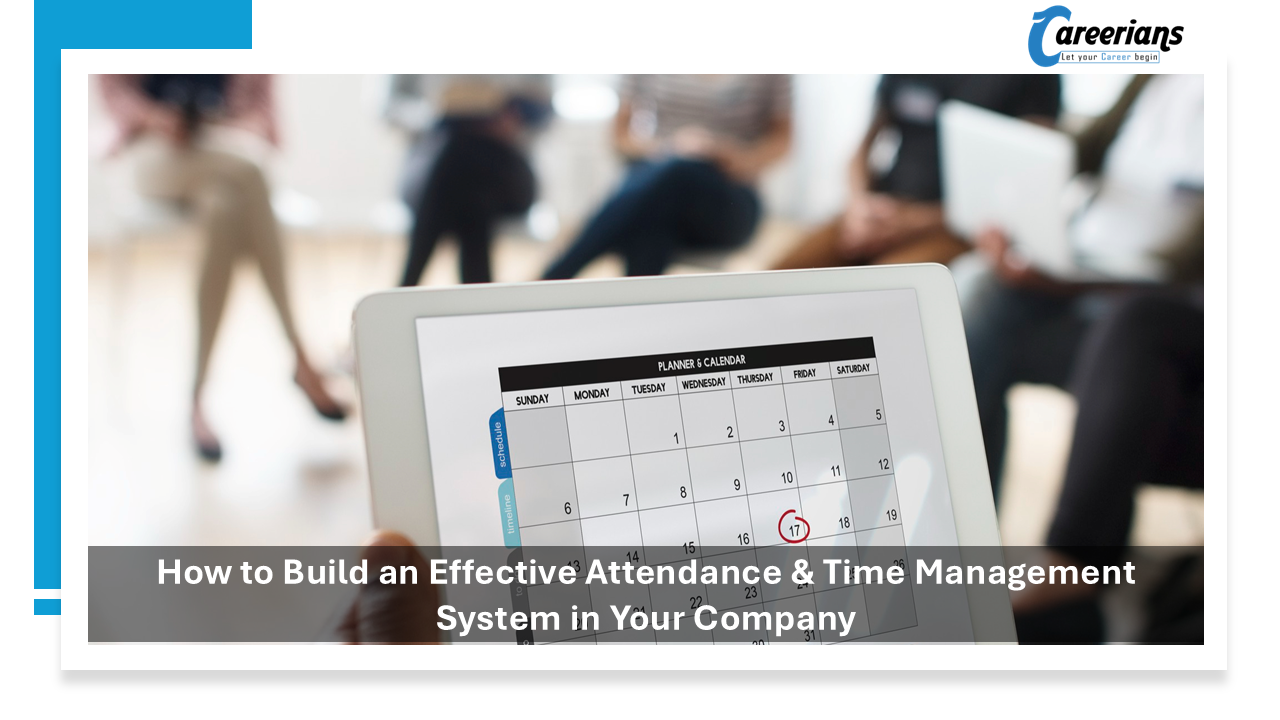
How to Build an Effective Attendance & Time Management System in Your Company
How to Build an Effective Attendance & Time Management System in Your Company
Attendance and time management may sound like routine administrative tasks —
but in reality, they’re the backbone of discipline, fairness, and productivity inside any organization.
The way a company designs its attendance system can either build trust or create frustration.
Some treat it as a surveillance tool,
others as a transparent structure that protects both employees and management.
The difference isn’t in the device or software —
it’s in the philosophy behind the system.
This article explains, step by step, how to design and implement an effective attendance and time management system
that supports fairness, consistency, and performance — not fear.
1. Why Attendance Systems Exist — The Real Purpose
Before you choose any tool or policy, ask yourself:
Why are we tracking attendance in the first place?
The goal is not to “catch absentees” or “punish latecomers.”
The real goal is to build discipline through fairness.
A well-designed system should:
-
Ensure equality among all employees.
-
Track working time accurately for payroll and productivity.
-
Define work patterns and shift coverage clearly.
-
Encourage responsibility and respect for company time.
When employees see the system as fair — not controlling —
it becomes a mutual trust mechanism, not a monitoring tool.
2. Types of Attendance Systems
Not every company needs the same setup.
Your choice depends on company size, workforce type, and infrastructure.
a. Manual System
Ideal for small businesses or remote sites with limited technology.
Employees record attendance in a logbook or Excel sheet.
Pros: Low cost, simple setup.
Cons: Easily manipulated, time-consuming, lacks accuracy.
b. Biometric System (Fingerprint / Face ID)
The most common option for mid-to-large organizations.
Pros:
-
Accurate and fast
-
Instant reporting
-
Direct payroll integration
Cons: Requires good infrastructure and clear policies to handle technical issues.
c. Cloud / Mobile-Based Systems
Used by modern, flexible, or multi-location teams.
Employees check in/out via mobile apps with GPS tracking.
Perfect for remote or hybrid work models.
Combines flexibility with accountability.
3. Building the Attendance Policy
No attendance system can work without a written, transparent policy.
Technology automates processes —
but policy defines behavior.
A proper Attendance Policy should include:
-
Official working hours (start and end times).
-
Grace period for lateness (if any).
-
Early leave and permission rules.
-
Overtime calculation method.
-
Disciplinary actions for violations.
-
How attendance data links to payroll or performance.
Tip:
Don’t copy another company’s policy.
Design one that fits your operational reality and workforce culture.
Fairness comes from logic, not strictness.
4. Managing Shifts and Working Hours
If your company operates multiple shifts, your system must handle them accurately.
Define each shift with:
-
Clear start and end times
-
Break durations
-
Rotation rules (if applicable)
-
Weekly rest days
Example:
Morning Shift: 7:00 AM – 3:00 PM
Evening Shift: 3:00 PM – 11:00 PM
Automating shift scheduling avoids confusion and ensures proper coverage —
especially in factories, hospitals, or customer service centers.
5. Dealing With Late Arrivals and Early Departures
Late arrivals and early leaves are the most common HR conflicts.
The solution is clarity and fairness.
Flexible lateness model:
-
Up to 10 minutes late per day without penalty (if not repetitive).
-
After that, accumulated minutes convert into one deducted hour.
Early leave rule:
-
Must be pre-approved by a line manager or HR.
-
Recorded in the system for deduction or time compensation.
Employees must clearly understand these rules.
Transparency prevents frustration and saves HR countless hours of argument.
6. Integrating Attendance with Payroll
This is where the attendance system becomes a financial tool.
Integration between Attendance and Payroll ensures that data translates directly into accurate pay.
Benefits include:
-
Precise calculation of working days.
-
Automatic deduction for absences or late arrivals.
-
Accurate overtime compensation.
Example:
If an employee worked 24 days instead of 26,
the system automatically calculates deductions based on their monthly salary.
Automation eliminates manual errors and ensures every employee gets exactly what they deserve.
7. Linking Attendance to Productivity
Tracking attendance shouldn’t be just about presence —
it should reveal insights about performance and discipline.

Ask questions like:
-
Do your most productive employees also have the best attendance?
-
Is lateness higher in specific departments?
-
Does long working time equal higher output, or just inefficiency?
Linking attendance data to KPIs helps HR identify behavioral trends and make data-driven decisions.
That’s how attendance transforms from paperwork to strategic intelligence.
8. Managing Hybrid and Remote Work
Post-pandemic, remote and hybrid work models became standard in many organizations.
This challenges traditional attendance tracking.
The solution?
Use smart digital tools that focus on results, not presence.
Options include:
-
Online logins and time tracking apps.
-
Task-based attendance systems.
-
GPS-based mobile check-ins for field teams.
The goal isn’t to control location —
it’s to measure accountability and deliverables.
9. Communicating the Policy Clearly
Even the best system fails if employees don’t understand it.
Every new hire should go through an induction explaining:
-
Attendance timings
-
Rules for lateness, absence, and overtime
-
How to use the attendance tool
-
Whom to contact for issues
Make sure managers communicate consistently —
because misunderstanding often feels like injustice.
10. Reviewing and Improving the System Regularly
Attendance systems aren’t “set and forget.”
Review them every 6–12 months to ensure they still serve your company’s needs.
Check for:
-
Repetitive attendance issues
-
Technical errors or delays
-
Outdated rules that no longer fit your business
-
Employee feedback
Continuous improvement keeps your system relevant, fair, and respected.
11. Balancing Control and Trust
The best attendance systems are not about tight control — they’re about mutual respect.
When employees feel trusted, they behave responsibly.
When they feel monitored, they resist.
So focus on:
-
Transparency, not surveillance.
-
Consistency, not punishment.
-
Communication, not fear.
That’s how you turn attendance into a shared value — not a power struggle.
Conclusion
An effective attendance and time management system is more than a clock-in tool.
It’s a reflection of company culture.
Companies that design attendance systems around fairness, trust, and accountability
build stronger engagement and higher productivity.
Those that rely on fear and punishment end up with turnover, frustration, and chaos.
So start simple:
-
Write a clear policy.
-
Choose the right tool.
-
Communicate transparently.
-
Connect it to payroll and performance.
And most importantly,
treat attendance as a symbol of mutual respect, not just a rule to enforce.
Because in modern HR,
discipline is not control — it’s collaboration.



